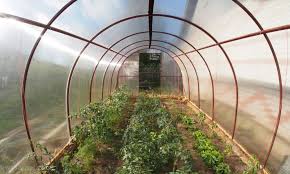
Breaking News
 Paper Silver IMPLODES: Experts Predict HUNDREDS PER OUNCE is Coming
Paper Silver IMPLODES: Experts Predict HUNDREDS PER OUNCE is Coming
 Trump Does it Again (and Again)
Trump Does it Again (and Again)
 International Judicial Authority Declares mRNA Injections Are Biological And Technological...
International Judicial Authority Declares mRNA Injections Are Biological And Technological...
 What Nobody Tells You About Homesteading
What Nobody Tells You About Homesteading
Top Tech News
 3D Printed Aluminum Alloy Sets Strength Record on Path to Lighter Aircraft Systems
3D Printed Aluminum Alloy Sets Strength Record on Path to Lighter Aircraft Systems
 Big Brother just got an upgrade.
Big Brother just got an upgrade.
SEMI-NEWS/SEMI-SATIRE: October 12, 2025 Edition
 Stem Cell Breakthrough for People with Parkinson's
Stem Cell Breakthrough for People with Parkinson's
 Linux Will Work For You. Time to Dump Windows 10. And Don't Bother with Windows 11
Linux Will Work For You. Time to Dump Windows 10. And Don't Bother with Windows 11
 XAI Using $18 Billion to Get 300,000 More Nvidia B200 Chips
XAI Using $18 Billion to Get 300,000 More Nvidia B200 Chips
 Immortal Monkeys? Not Quite, But Scientists Just Reversed Aging With 'Super' Stem Cells
Immortal Monkeys? Not Quite, But Scientists Just Reversed Aging With 'Super' Stem Cells
 ICE To Buy Tool That Tracks Locations Of Hundreds Of Millions Of Phones Every Day
ICE To Buy Tool That Tracks Locations Of Hundreds Of Millions Of Phones Every Day
 Yixiang 16kWh Battery For $1,920!? New Design!
Yixiang 16kWh Battery For $1,920!? New Design!
 Find a COMPATIBLE Linux Computer for $200+: Roadmap to Linux. Part 1
Find a COMPATIBLE Linux Computer for $200+: Roadmap to Linux. Part 1
Splitting sunlight: Researchers have created a film for greenhouses that increases plant...

(Natural News) A future study may just find a new way to harness the power of the sun further and provide more sustainable methods for crop development. Engineers from the University of Colorado Boulder, in collaboration with Michigan State University, are developing a new greenhouse material that allows the light from the sun to be split into two forms. These forms will then be used for distinct purposes, such as plant growth and water purification.
The planned four-year project will create a customizable and inexpensive material that will help separate photosynthetic light and infrared light. It is part of a $2.45 million grant from the U.S. Department of Agriculture and administered under the National Science Foundation's Innovations at the Nexus of Food, Energy and Water Systems (INFEWS) program.
Since the 1960s, greenhouses have been utilized all over the country. They remain to be the benchmark for all "effective plant productivity" compared to open field farming. However, the greenhouse farming also carries a steep price tag: Energy costs resulting from heating, ventilation, electrical lighting, and water consumption for evaporative cooling are huge. Researchers believe that by the year 2050, current greenhouse capacities will probably be unable to keep itself afloat with the overall demands of human consumption, making expansion a pressing order.
Plants are only able to use just around 50 percent of incoming sunlight for photosynthesis under typical conditions. However, the remainder of that sunlight becomes unused. Under the proposed study, the new material will increase the amount of sunlight that can be used in crop growth, while the rest will be used to power other processes.
The material that the engineers are developing is a semi-translucent film that is capable of splitting the light it receives to various properties. From the light it receives, it will convert the green wavelength, which does not benefit production as much, to a red wavelength, which is more useful and beneficial for crop growth. The resulting light will add more "photosynthetically efficient light" that can be used in growing plants. (Related: Greenhouse of the Future is the perfect structure for hosting Food Rising Mini-Farm Grow Boxes.)
Moreover, the light that cannot be used for photosynthesis will be transferred to help with solar-driven water purification. "The near-infrared wavelengths can help clean brackish wastewater, allowing it to be recirculated in an advanced humidification-dehumidification interface and further reducing the greenhouse's energy footprint," explained Ronggui Yang, a professor in CU Boulder's Department of Mechanical Engineering and the proposed study's lead author.



